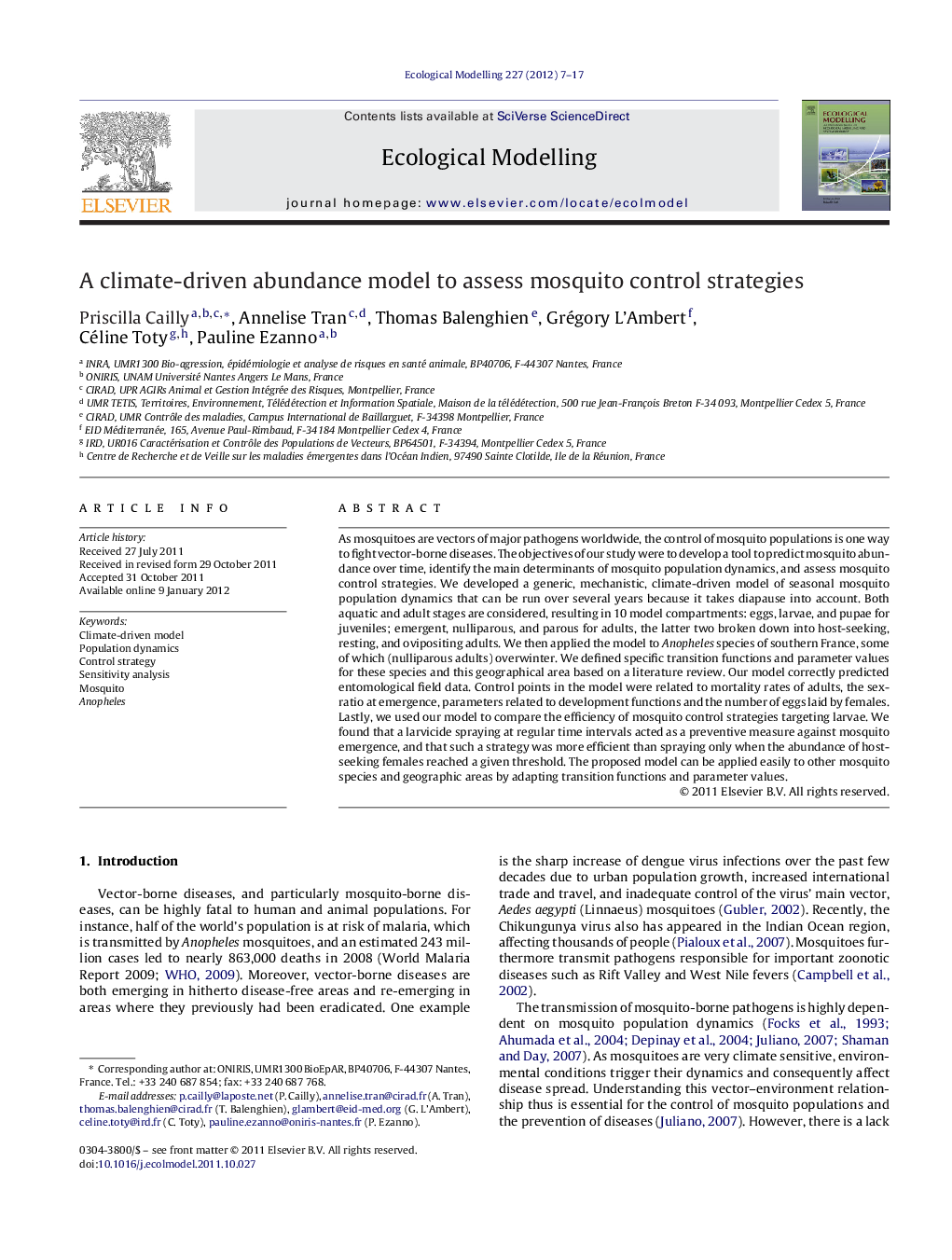| کد مقاله | کد نشریه | سال انتشار | مقاله انگلیسی | نسخه تمام متن |
|---|---|---|---|---|
| 4376557 | 1617516 | 2012 | 11 صفحه PDF | دانلود رایگان |

As mosquitoes are vectors of major pathogens worldwide, the control of mosquito populations is one way to fight vector-borne diseases. The objectives of our study were to develop a tool to predict mosquito abundance over time, identify the main determinants of mosquito population dynamics, and assess mosquito control strategies. We developed a generic, mechanistic, climate-driven model of seasonal mosquito population dynamics that can be run over several years because it takes diapause into account. Both aquatic and adult stages are considered, resulting in 10 model compartments: eggs, larvae, and pupae for juveniles; emergent, nulliparous, and parous for adults, the latter two broken down into host-seeking, resting, and ovipositing adults. We then applied the model to Anopheles species of southern France, some of which (nulliparous adults) overwinter. We defined specific transition functions and parameter values for these species and this geographical area based on a literature review. Our model correctly predicted entomological field data. Control points in the model were related to mortality rates of adults, the sex-ratio at emergence, parameters related to development functions and the number of eggs laid by females. Lastly, we used our model to compare the efficiency of mosquito control strategies targeting larvae. We found that a larvicide spraying at regular time intervals acted as a preventive measure against mosquito emergence, and that such a strategy was more efficient than spraying only when the abundance of host-seeking females reached a given threshold. The proposed model can be applied easily to other mosquito species and geographic areas by adapting transition functions and parameter values.
Figure optionsDownload as PowerPoint slideHighlights
► We model a climate-driven model of mosquito population dynamics over several years.
► This model is generic: the model structure is common to all mosquito species.
► The model allows the efficiency of several control strategies to be compared.
► Our model predicts entomological field data.
► Control points are mortality rate, development rate, sex-ratio, and number of eggs laid.
► Regularly scheduled treatments prevent mosquito emergence.
Journal: Ecological Modelling - Volume 227, 24 February 2012, Pages 7–17